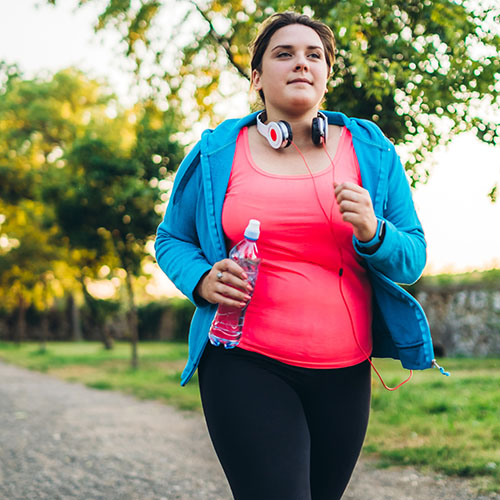Food energy density: Feel full on fewer calories
Who doesn't want to fill up on fewer calories? Find out how eating the right foods can help you do just that!
Energy density is just another way to say caloric density — after all calories provide energy. In a nutshell: It is the number of calories in the amount or weight of food you eat. Foods that don't have a lot of calories packed into each bite — like fruits and vegetables — are low in energy density. They also tend to be low in fat and high in water or fiber content. Foods high in energy density pack a lot of calories into a small volume of food; these include fatty foods, such as many fast foods, and foods high in sugar, such as sodas and candies.
Eat more low-density foods
How full you feel is determined by the volume and weight of food — not by the number of calories you consume. If you choose foods with low energy density — few calories for their bulk — you can eat more volume but consume fewer calories because of two key factors:
- Water. Most vegetables and fruits contain a lot of water, which provides volume and weight but few calories. For example, half of a large grapefruit is 90 percent water with just 50 calories.
- Fiber. The high fiber content in foods such as vegetables, fruits and whole grains adds bulk to your diet, so you feel full sooner. Fiber also takes longer to digest, making you feel full longer. Adults need about 25 to 35 grams of fiber a day, but the average adult consumes much less. Increase your fiber gradually while you increase the fluids in your diet.
Breakfast
Use these meal comparisons to help guide your selections.
For about 300 calories, you could have...
High-density meal: A single large glazed doughnut
or
Low-density meal: A bowl of bran flakes with skim milk, blueberries and a slice of whole-wheat toast with peanut butter
Lunch
For about 275 calories, you could have...
High-density meal: A candy bar
or
Low-density meal: A warm bowl of soup, loaded with fiber-rich beans and vegetables
Dinner
For about 600 calories, you could have...
High-density meal: A bacon cheeseburger
or
Low-density meal: A sandwich with soup, fresh fruits and veggies, and a few crackers
Snack
For about 150 calories, you could have...
High-density snack: 1 ounce of potato chips
or
Low-density snack: 3 1/2 cups of air-popped popcorn
As you can see, you can eat fewer calories yet feel more satisfied by choosing foods that are low in energy density — in other words, you can have more food. Try reducing the fat and increasing the amount of fiber-rich foods, such as fruits and vegetables, in your favorite dishes.
Related Posts
Explore Topics
Success Stories (34) Food & Nutrition (25) Exercise (3) Habits & Motivation (12) Weight-Loss Medications (16) Weight Loss (4)

Join the Mayo Clinic Diet today!
If you’re ready to commit to making a real change in your life, we have a real solution. Start losing weight with the Mayo Clinic Diet today!